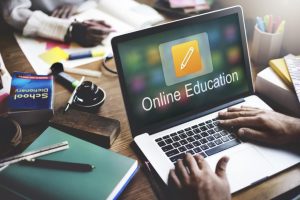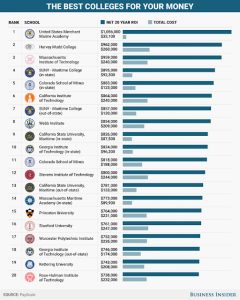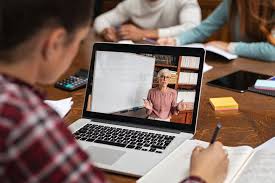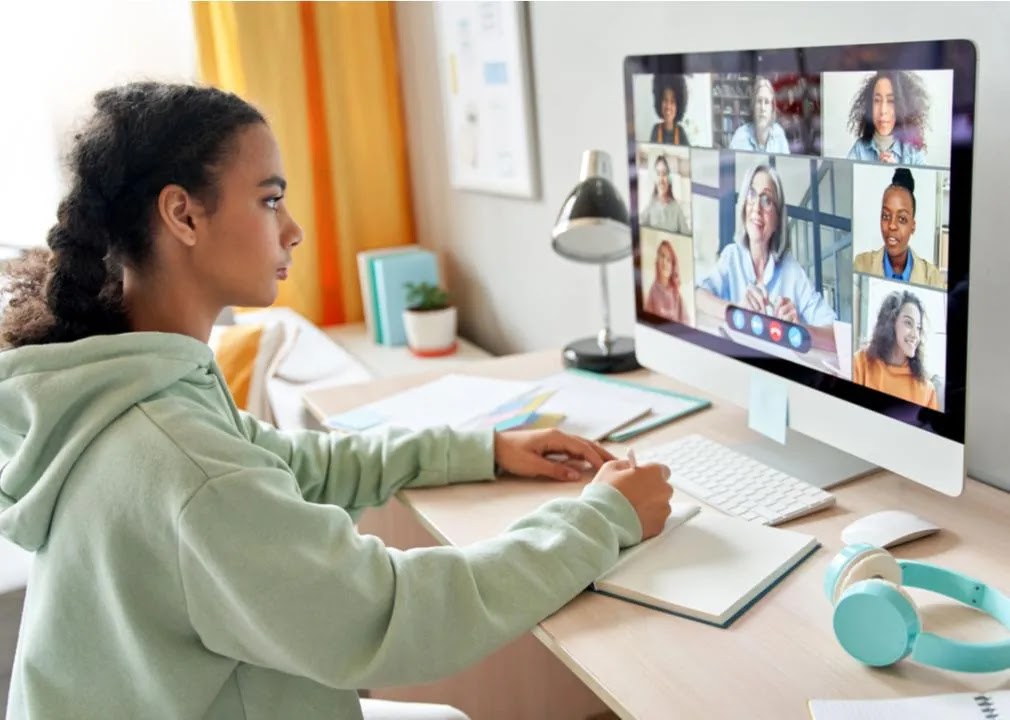The Rise of Online Colleges: Revolutionizing Education in the Digital Age
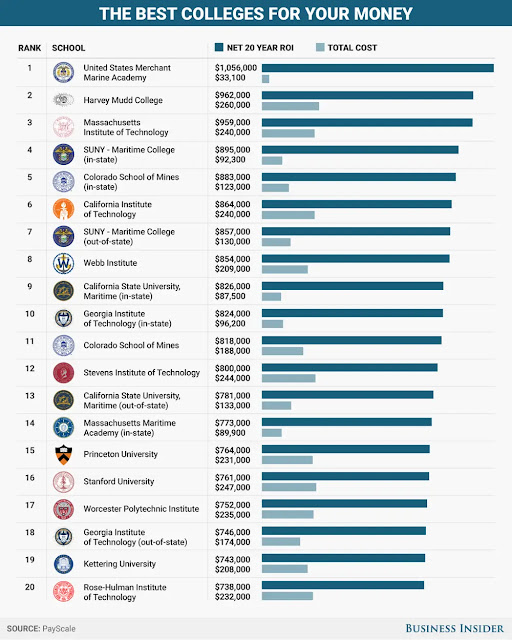
The Rise of Online Colleges: Revolutionizing Education in the Digital Age
The Rise of Online Colleges: Revolutionizing Education in the Digital Age..
To facilitate learning and interaction, online colleges utilize various tools and technologies. Communication channels, such as email, discussion boards, and video conferencing, enable students to engage with instructors and fellow classmates. Virtual classrooms or webinars allow for real-time lectures, presentations, and discussions. Online assessments and quizzes are used to evaluate students’ progress and understanding of the course material. Additionally, online libraries, research databases, and digital resources provide access to scholarly materials, enhancing the learning experience.
Introduction
Learning is like water and air, as the Senior member of Arabic Writing Taha Hussein tells us, so life can’t be envisioned without persistent learning, yet after the crown scourge and the social dividing it has turned into an option in contrast to going to schools, colleges and various focuses.
Everybody is considering what this kind of realizing implies, whether we will be satisfied with a wooden pony rather than the one we’ve been not too far off, or whether we will have a rich and different opportunity for growth through electronic reality?!
Furthermore, for more comprehension of distance learning, UNESCO characterizes Distance Training as “an instructive cycle wherein all or the vast majority of the educating is led by an individual a long way from the student, with the accentuation that most contacts among instructors and students are made through a specific medium, whether electronic or printed”.
we additionally find the American Culture for Distance Learning characterized as “the most common way of obtaining information and abilities as a moderate method for shipping training and data, including a wide range of innovation and various types of learning for distance learning.”
Distance Instruction might be synchronized, students communicate with the educator simultaneously, get prompt reactions, or be nonconcurrent and permit the understudy to cooperate with their examples whenever without quick response.
The web based learning climate is frequently worked with by learning the executives frameworks.
There are a wide range of terms of distance instruction like correspondence schooling, open training, disseminated training, and there are different articulations, for example, home or free review, review from abroad, and furthermore changed terms like distance learning or Remote Learning.
Components of distance learning
In a book, Training Master Dr. Cassia Rae, separates between this sort of e-learning and its virtual training, through which an electronic educational program and construction is taken on to help understudies signed up for school, while distance learning utilizes electronic procedures to get to the educational plan outside conventional homerooms, considering space among educator and understudy; both convey from home, as a rule during crisis times like the flare-up of the Coved19 pandemic that we live in.
The main components of this kind of learning incorporate time, correspondence, innovation and example plan;
Time:
It ought to fit the assumptions for the educator and the understudy, and incorporate pondering how long we can begin, pause and separation times, some of the time instructors will need to impart continuously, or all the while, with an understudy or gatherings of understudies. These sorts of correspondence can be made through video conferencing, talk or by telephone. Applications like FaceTime, Google Home bases, Skype, Microsoft Groups, Zoom, or What’s Application can be utilized to give these simultaneous associations.
The idea of “office hour” can likewise be utilized with the goal that numerous understudies can convey in visit meetings all the while, permitting more touch focuses among educators and understudies.
Interchanges:
Understudies ought to know precisely how and when not out of the ordinary to speak with the educator. Is email desirable over web-based talk? Should all interchanges be inside the particular innovation apparatus? Imagine a scenario where this device doesn’t work. What is the contingency plan for correspondence? Every one of these inquiries ought to be addressed in a basic archive that sets out all assumptions. You ought to consider the best ways of noting understudies’ inquiries nonstop.
Innovation:
Innovation can change in ad libbed distance learning conditions. Assuming schools permit understudies to bring back home apparatuses, understudies should learn.
Regions that are not generally engaged with distance learning or virtual learning in their customary schedules need to give elective approaches to understudies to get and return tasks; sending paper bundles home and getting them wrapped up is one method for keeping on examining during an emergency.
Schools need to give extremely clear data on the most proficient method to get to any web-based stage during distance learning, particularly if understudies, guardians and educators don’t utilize these devices consistently. Specialized help should likewise be given all through the region and not the obligation of the educator, who will have to the point of staying aware of the distance learning climate. Clear data depicting investigating steps and contact data for extra specialized help ought to be promptly accessible to everybody.
Example plan:
The plan of distant illustrations is somewhat more itemized than making the example to be made sense of inside the study hall, the substance should be exceptionally clear, and the educator expects that there will be an absence of understanding and in this manner add nitty gritty clarifications inside the construction of the illustration.
It is extremely critical to put exercises, activities and assessment in the design of the illustration, and to get input from all understudies for the progress of any example from a distance, while diminishing the review time and on the off chance that it is normal 45 minutes inside the study hall, it will be roughly 20 minutes from a distance, as per the actual book.
Standards of distance learning:
Distance learning depends on various standards, the most significant of which are (as indicated by Suzanne al-Mahdi):
A singular cycle: the instructive cycle should be planned in a manner that compares to the singular’s preparation, capacities, tendencies, patterns and speed in learning.
Abstract: Learning with oneself longing and inspiration of the student.
– Ceaseless: instruction is a long lasting interaction that might wish to foster oneself expertly, deductively or socially, and should be offered the chance to accomplish this, whenever, anyplace.
Free: that is, the student ought to learn all alone, frequently all alone.
. Popularity based: as in schooling is the right of each and every citizen paying little heed to variety, orientation, race, religion, conditions and age.
In The Student’s Mind
Specialists underscore that learning is affected by the substance and instructive system in instructive materials more than the kind of innovation used to convey training, as Terry Anderson places it in the main section of his renowned book “E-Learning”, a few speculations that propose exactly the same thing, like the truism “Kuzma” : not the PC makes understudies learn, yet the plan of genuine models and reenactments, and the connection of understudies with those models.
Dr.Siemens proposes to include students in the quest for data to construct a valid and ideal information base in an electronic world; data may not be gotten from a solitary source, ensured, yet gathered from various substances, a strategy that should be unequivocally embraced in distance learning.
According to the perspective of mental brain science, as per similar book, we will see that learning is a cycle including memory, thinking, deliberation and inspiration and the student utilizes various sorts of knowledge and memory during learning, and sensations are gotten through the faculties too, and assuming that you need imaginative training from a distance, you should stir that large number of faculties and insights in the student.
All the more definitively, the span in the functioning memory is roughly 20 seconds, and on the off chance that the data isn’t supportive of boot productively, it isn’t moved to a drawn out memory of capacity and afterward positioned in examination with the past information models to be perceived, and these and different things give us a foundation to the worth of cautious handling of the instructive substance gave from a distance.
Andersen’s book focuses to the significance of utilizing various instructive exercises to oblige different learning styles.
Specialists encourage you to establish a responsibility climate inside the distance learning bunch, and to force rules of connection, as this upgrades and assists the learning with handling, as well as continually making a test for the biggest number of members, while compensating individuals with the best evaluations, titles, declarations and such.
A fundamental open door
In his book, Andersen brings up that distance training will stay the most confident cure to the mix-ups of eagerness, obliviousness and hostility that undermine our reality.
Distance learning has turned into an essential open door not just for understudies to secure different information with more prominent adaptability, productivity, less expense, or even occupation related positions, yet additionally for bosses and the economy of countries inside the purported “new information economy”, and all foundations have previously been secured in an unhinged competition to book their legitimate put on the guide of projects and educational plans advertised “from a distance”.
Because of the ongoing prevalence of this sort of learning, the job of the instructor has bit by bit moved to any semblance of a maestro to conceptualize the subject of the talk, not the educator of the proper educational program, where learners and understudies share what they have perused inside the system of generally welcomed projects and plan, and hence the instructive measures, which likewise incorporate assessment standards, have developed.
This example has additionally empowered the supposed “a majority rules government of information” and made it accessible to minimized, distraught or individuals with exceptional requirements.
MOOCs rooms and video addresses have been changed into a reasonable option in contrast to many eye to eye addresses, particularly since they are a framework that permits the opportunity to learn as soon a possible for the understudy, known as “offbeat” learning, and as per (Kaplan and Helen, in a scholarly article on the “Wayback Machine”)this rooms expected to coordinate virtual entertainment applications and client created content in disconnected classes too. Microblogging applications like Twitter ought to go to extend conversations outside the homeroom and permit understudies to share or tweet their responses to understanding errands.
Principles of distance learning:
Distance learning is based on a number of principles, the most important of which are (according to Suzanne al-Mahdi):
- An individual process: the educational process must be designed in a way that corresponds to the individual’s readiness, abilities, inclinations, trends and speed in learning.
- Subjective: Learning with the self-desire and motivation of the learner.
- – Continuous: education is a lifelong process that may wish to develop oneself professionally, scientifically or culturally, and must be given the opportunity to achieve this, at any time, anywhere.
- Independent: that is, the learner should learn on his own, often on his own.
- . Democratic: in the sense that education is the right of every member of society regardless of colour, gender, race, religion, circumstances and age.
In The Learner’s Psyche
Experts emphasize that learning is influenced by the content and educational strategy in educational materials more than the type of technology used to deliver education, as Terry Anderson puts it in the first chapter of his famous book “E-Learning”, several theories that suggest the same thing, such as the saying “Kuzma” : it is not the computer that makes students learn, but the design of real-life models and simulations, and the interaction of students with those models.
Dr.Siemens proposes to involve learners in the search for information to build a true and ideal knowledge base in a web-based world; information may not be derived from a single source, certified, but collected from different entities, a method that must be strongly adopted in distance learning.
From the point of view of cognitive psychology, according to the same book, we will see that learning is a process involving memory, thinking, abstraction and motivation and the learner uses different types of intelligence and memory during learning, and sensations are received through the senses as well, and if you want a creative education remotely, you must awaken all those senses and intelligences in the learner.
More precisely, the duration in the working memory is approximately 20 seconds, and if the information is not pro-boot efficiently, it is not transferred to a long-term memory of storage and then placed in comparison with the previous knowledge models to be understood, and these and other things give us a background to the value of careful processing of the educational content provided remotely.
Andersen’s book points to the importance of using a variety of educational activities to accommodate different learning styles.
Experts advise you to create a commitment environment within the distance learning group, and to impose rules of affiliation, as this enhances and helps the learning process, as well as constantly creating a challenge for the largest number of participants, while rewarding people with the best ratings, titles, certificates and the like.
An indispensable opportunity
In his book, Andersen points out that distance education will remain the most hopeful antidote to the mistakes of greed, ignorance and aggression that threaten our world.
Distance learning has become an indispensable opportunity not only for students to acquire different knowledge with greater flexibility, efficiency, less cost, or even job-related jobs, but also for employers and the economy of nations within the so-called “new knowledge economy”, and all institutions have already been locked in a frantic race to book their rightful place on the map of programs and curricula offered “remotely”.
Due to the current popularity of this type of learning, the role of the teacher has gradually shifted to the likes of a maestro to brainstorm the topic of the lecture, not the teacher of the fixed curriculum, where trainees and students share what they have read within the framework of well-received programs and plan, and therefore the educational criteria, which also include evaluation criteria, have evolved.
This pattern has also encouraged the so-called “democracy of knowledge” and made it available to marginalized, disadvantaged or people with special needs.
MOOCs rooms and video lectures have been transformed into a practical alternative to many face-to-face lectures, especially since they are a system that allows the freedom to learn in a timely manner for the student, known as “asynchronous” learning, and according to (Kaplan and Helen, in an academic article on the “Wayback Machine”)this rooms expected to integrate social media applications and user-generated content in offline classes as well. Microblogging apps like
Twittershould turn to expand discussions outside the classroom and allow students to share or tweet their reactions to reading tasks.
There are many justifications for distance learning, which has become a necessity and not a luxury after the outbreak of the new coronavirus in our world today, according to Dr. Salah Al-Sharhan in his study on “Open Education and Distance Learning in the Arab World”, the most important of which are:
* Global trends by adopting open education, which is a driver for the economies of countries.
Social and cultural justifications (providing the opportunity to learn for those who have not had the luck to attend university, those who are unable to leave their home or work, and the possibility of combining academic achievement with work.
* Human and geographical justifications: absorbing large numbers beyond the capacity of traditional universities are the most important features of distance learning, with the ability to refine the experiences of trainees and provide them with better opportunities in the labor market.
*Humanitarian and psychological justifications: Distance learning makes the right to learn one and is accessible to all, it is less expensive than its traditional counterpart, more suitable for wider segments, and it improves one’s level in society and makes it more up-to-date with the new developments of the times.
Economic justifications: Distance learning is the least expensive per capita and the highest is due to society and to drive the economy.
Political justifications: This pattern of instability and political unrest is the best option, especially when educational institutions and universities are closed.
The Rise of Online Colleges: Revolutionizing Education in the Digital Age
4. Personalized Learning Experience:
Conclusion
The impact of online colleges extends beyond individual learners. These institutions have the potential to address some of the challenges faced by traditional higher education, such as limited capacity, lack of resources, and geographical constraints. By leveraging digital platforms, online colleges can accommodate a larger number of students, breaking down the barriers of physical infrastructure. This scalability allows for increased access to education, empowering individuals who may have been previously unable to pursue higher learning due to various constraints.
Collaboration and networking opportunities are also expanding in the online college space. Virtual team projects, discussion forums, and social networking platforms connect students from different backgrounds and cultures, fostering a sense of community and enabling peer-to-peer learning. Additionally, online colleges often facilitate mentorship programs and industry partnerships, connecting students with professionals in their fields of interest. These connections provide valuable guidance, advice, and potential career opportunities, further enhancing the student’s educational journey.
SOURCE:WORKABROADGLOBAL


